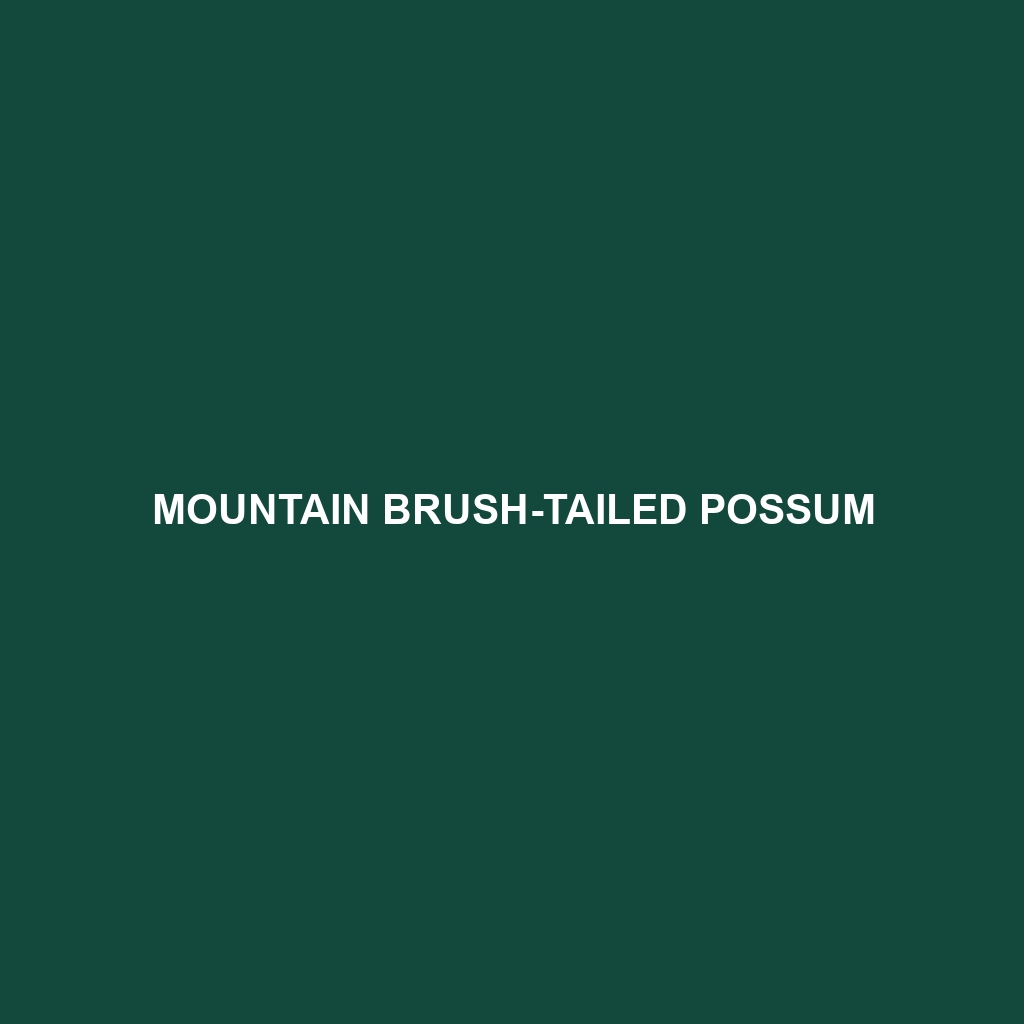Mountain Brush-tailed Possum: A Detailed Description
The Mountain Brush-tailed Possum (Trichosurus cunninghami) is an intriguing marsupial native to the cooler, high-altitude forests of southeastern Australia. Known for its adaptability and distinctive appearance, this possum plays a vital role in its ecosystem. With its nocturnal habits and diverse diet, the Mountain Brush-tailed Possum is a fascinating subject for wildlife enthusiasts and researchers alike.
Physical Characteristics:
Size: The Mountain Brush-tailed Possum is a medium-sized marsupial, typically measuring between 40-50 cm in body length, with an additional 30-40 cm for its bushy tail. Adults generally weigh between 1.5 to 4 kg.
Coloration: This possum has a dense and soft fur coat that ranges in color from grey to dark brown, with a slightly paler underbelly. The contrast between its dark dorsal area and lighter ventral area provides effective camouflage in its forest habitat.
Special Features: As its name suggests, one of the most distinguishing features of this possum is its bushy tail, which is prehensile and aids in balance and grasping branches. It also has sharp claws and strong limbs that facilitate arboreal life.
Behaviors:
Social Interactions: The Mountain Brush-tailed Possum is primarily solitary, with individuals maintaining and defending their territories. However, overlapping territories may occur, especially in areas with abundant food resources. Communication is often through vocalizations, scent marking, and body language.
Feeding Habits: This possum is an omnivore with a highly varied diet. It primarily feeds on leaves, fruits, flowers, and bark, but will also consume insects and small vertebrates when available. Its feeding habits contribute to seed dispersal and the control of insect populations.
Ecological Roles: As a nocturnal forager, the Mountain Brush-tailed Possum helps maintain the health of its forest ecosystem. By feeding on a variety of plant materials, it aids in plant regeneration and diversity. It also serves as prey for larger predators, thus contributing to the food web.
Habitats:
Geographic Range: The Mountain Brush-tailed Possum inhabits the high-altitude regions of Victoria and New South Wales in Australia. They are commonly found in montane forests and woodlands, particularly in areas with dense understory and abundant tree cover.
Adaptations: This possum has developed several adaptations to thrive in its cool, mountainous environment. Its thick fur provides insulation against cold temperatures, while its nocturnal habits help conserve energy and avoid daytime predators.
Conservation Status:
Current Status: The Mountain Brush-tailed Possum is currently not listed as endangered, but local populations can be affected by habitat destruction, climate change, and human encroachment. Conservation efforts focus on habitat preservation and monitoring population dynamics to ensure long-term survival.
Fascinating Fun Facts:
Tail Tales: The Mountain Brush-tailed Possum’s tail is not only bushy but also prehensile, which means it can wrap around branches and objects, aiding in climbing and stability.
Nocturnal Nature: These possums have large, sensitive eyes adapted for night vision, allowing them to navigate and forage effectively in the dark.
Vocal Communicators: They are known for their distinctive vocalizations, which include grunts, hisses, and screeches, used in communication and territorial defense.
Versatile Diet: Their ability to consume a wide range of foods helps them adapt to various environmental conditions and resource availability.
By understanding and appreciating the Mountain Brush-tailed Possum’s unique characteristics and ecological importance, we can better support conservation efforts and ensure the continued presence of this remarkable marsupial in Australia’s high-altitude forests.
